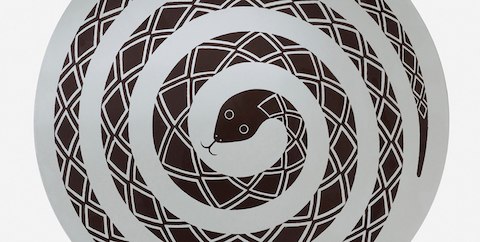Classic designs become classic for a reason—they not only enjoy wide popularity, but they also change the way we think, see, and feel. Eames molded plywood chairs utilized a new technological approach to dispense with upholstery and upend traditional notions of comfort. Nelson’s platform bench established a baseline for multipurpose furniture by fulfilling the role of table, seat, and platform with the bare necessity of materials. The symmetrical wood supports of the Noguchi table base are the very essence of sculpture masquerading as furniture.
But in the fabled history of Herman Miller, for every classic there are the designs that got away. Nelson’s first collection alone offered no less than 140 pieces. Describing the role of design at Herman Miller to salespeople in 1959, former CEO Hugh De Pree paraphrased Dr. Seuss. It was “to go beyond Z.”A company that was brave enough to bring something like the Marshmallow sofa to life had to be willing to take risks. While some paid off, others fizzled and faded.
Most of these forgotten designs would be totally lost were it not for a popular resurgence in mid-century modern that began around the turn of the 21st century. It was around this time that auctioneer Richard Wright opened his eponymous Chicago auction house. It has since become the premier destination for collectors of modern furniture. “I got into the business early and knew nothing. Luckily I was very quickly pointed in the direction of Herman Miller,”he says. “Through Eames I soon became a big fan of the entire output of the company—Rohde, Nelson, Girard, and so on. I would go to the Zeeland, Michigan, area and find all kinds of things—it was an exciting time; the first generation of real Herman Miller collecting.”
Since 2000, roughly 1,400 Herman Miller pieces have passed through Wright’s doors, and he’s certainly seen his share of the classics. “Do I care about selling any more George Nelson benches—not really. They are fine, but like any song you’ve heard too many times, they just don’t thrill me.”Nonetheless, Wright is happy to walk us through the following ten designs that “absolutely get [his] heart beating,” and trace a very different arc in Herman Miller’s story.
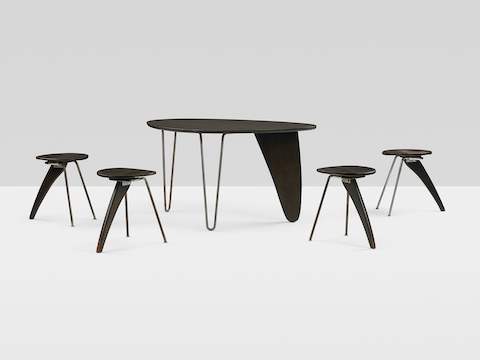
ISAMU NOGUCHI – RUDDER DINING SUITE
While the IN-50 table went on to become THE Noguchi table, Herman Miller produced a handful of the sculptor’s designs in the late 1940s, including the recently reissued Rudder table. Freely mixing prosaic industrial parts with expressive sculptural elements, this dining suite is representative of Noguchi’s quirky approach to furniture design.
When you first start learning about Herman Miller, you make your list, you look in the old catalogs, and you dream of things, and the Rudder table and stools are like the Holy Grail. One of the things that I adore about this is that it is such a truly impractical design—three-legged stools are a challenge. I love that in the late 1940s it was marketed as upscale, contemporary furniture—but it wasn’t trying to be art furniture as might be the case today. To get a major furniture manufacturer to produce something this extreme is amazing—just think about what people were dressed in and society in general at the time. But then you have this example that was actually used by a family as it was intended for almost 60 years. It’s fantastic to me.
The other thing about this—and I have never been able to unearth the real story—is that there are two variations of the Rudder stool, one with a factory-machined seat and one that is cut from the molded seat of an Eames chair. The legs on the stool are Eames chair stock, with Eames footpads, and Eames shock-mounts underneath. I have this romantic vision of Noguchi in a factory pulling off-the-shelf parts and adapting them to create this design.
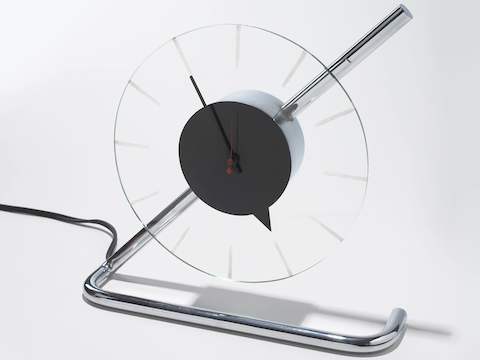
GILBERT ROHDE – Z-CLOCK
The Herman Miller Clock Company was launched in 1926 and remained a part of the business until 1937, when it was spun off under the direction of Herman Miller founder DJ De Pree’s brother-in-law, Howard Miller, and became the Howard Miller Clock Company. While he was design director for Herman Miller, New York architect Gilbert Rohde designed a series of notable desktop clocks that echo the modern style of his furnishings.
The Rohde clocks so obviously lead to the Nelson clocks. Some of the Rohde clocks—this one in particular—are incredibly good. To my eye, they are some of the most successfully produced, streamlined, machine age, Art Deco design from America. You can date them immediately, but they are just perfect little objects—just simple, uncompromising, and totally pure, but also functional. What is also interesting is the number of different clocks produced. Howard Miller took variation to an insane kind of level—there are something like 156 Nelson clocks—but considering that these were made during the depression, it’s fairly impressive that they invested in creating so many models.
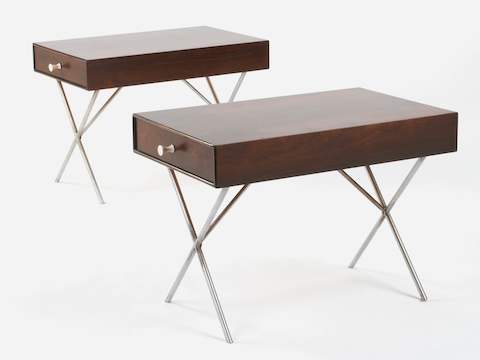
GEORGE NELSON & ASSOCIATES – THIN EDGE END TABLES
A sort of hybrid between Nelson’s miniature chests, the Thin Edge group case goods, and the X Leg table, these scarcely seen end tables date from the mid-1950s.
These tables were actually stamped and stenciled ‘discontinued,’which is really great because they made hardly any of them and so right here on the piece you have them saying ‘we give up.’ They're a bit overbuilt—it’s a rather complicated base for such a delicate and minimal top—so they kind of internally dispute themselves. They do have a certain charm though—especially at the price they fetched.
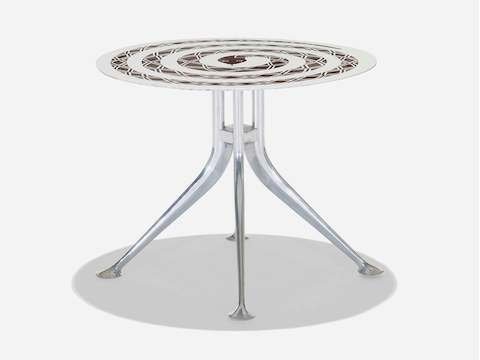
ALEXANDER GIRARD – SNAKE OCCASIONAL TABLE
In the mid-1960s Herman Miller produced a range of bespoke Girard furniture designs for installation at the Braniff Airlines lounges he was concurrently designing. A variety of seating, tables, stools, and ottomans were introduced commercially as The Girard Group in 1967, but were discontinued soon thereafter. The snake motif that appears on this enamel table top would resurface in the early 1970s on a silkscreened Action Office Environmental Enrichment panel.
I think Girard was more successful as a textile designer—a genius really—and graphic designer, but his furniture has an appealing quirkiness. I love this thing. It just screams everything I love about Girard. He adds sort of richness and humanity to what can sometimes come off as sterile modernism. This should really be worth more money than it is in the current market.
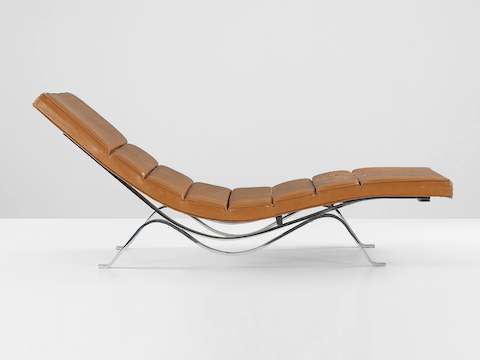
GEORGE NELSON & ASSOCIATES – CHAISE MODEL #5490
This chrome based chaise (and matching lounge chairs) was designed by Irving Harper for the Nelson Office and first appeared in the 1955 Herman Miller Collection catalog.
I find this piece to be much more successful than some of the other designs from the Nelson Office. It feels heavily influenced by the International Style and Mies van der Rohe’s Barcelona chairs. I like how it works within that vernacular, but comes up with something completely different. It’s particularly good in the chaise version—but I have only seen a handful in almost 30 years of doing this. This early version has some differences in the upholstery details and features some extra bracing.
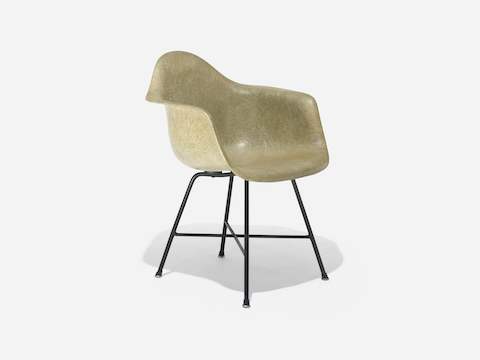
CHARLES AND RAY EAMES – PRE-PRODUCTION DAX
This early pre-production molded plastic chair dating from around 1950 features a cross-brace left off the final design of what would later be offered as the X-base or H-base.
In my view there are a lot of—I can’t think of a better word, but—bastards that are put together with parts that have nothing to do with the designer. I have handled my fair share of Eames things that everybody wants to be prototypes but are really just factory-made things. They used to turn up a lot in the Zeeland area. I have seen Eames coffee table tops with a molded plywood spine from the plywood chair adapted as legs. This is clearly not an Eames design, but just something made with some extra parts for the porch or wherever.
So within the Eames world one of the Holy Grail things for me is the real true prototypes of the famous chairs. For instance, there is a three-legged version of the DCM that I have always wanted to handle. I came close, but have never been able to do it. Is it a better design, of course not, but I love it. This on the other hand we call ‘pre-production’ rather than prototype. I can’t imagine this mock-up got very far down the line.
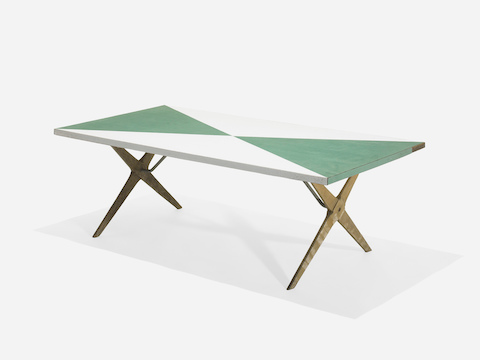
GEORGE NELSON & ASSOCIATES – CUSTOM COFFEE TABLE
Little is known about this custom table from George Nelson’s estate. A similar table is pictured but not identified among a furniture grouping in the 1955 Herman Miller Collection catalog.
As a person in this business I love these opportunities. I never got to meet George Nelson—so working with some of his family was the closest I have come. Why did he take this home? Is it a true prototype? We didn’t make any real claims about it, but he did have it.
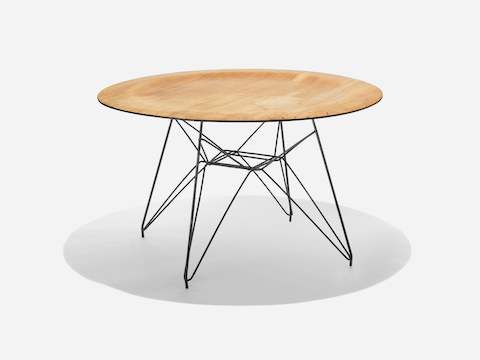
HERMAN MILLER – OCCASIONAL TABLE
This unique table is constructed of a Charles and Ray Eames circular table top and an experimental base related to the wire chairs. It came from the collection of a former Herman Miller employee.
This goes right into the gray area. We are not calling it Eames. We scoured the background of all the old studio shots of the Eames Office, and this was not something that we could ever pinpoint. It’s a standard top, but then the base is constructed like the ‘Eiffel Tower’chair base, but is lower and wider. So we couldn’t figure out what this was. Does the guy who spends his whole week making metal chairs decide one Friday afternoon to make a table base and toss on a plywood top? That stuff happens.
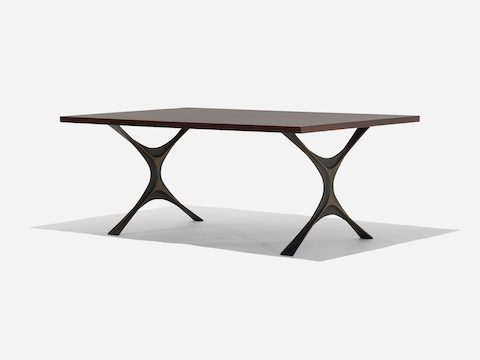
GEORGE NELSON & ASSOCIATES – BRONZE GROUP COFFEE TABLE
Produced in limited quantities in the late 1960s Nelson’s Bronze Group coffee table is actually the only member of the Bronze group. Sitting high for a coffee table, almost two feet above the ground, the design behaves almost like a desk or dining table for lounge seating.
I think of this as an interesting failure. I can’t say that I like it—but I like it for its rarity. I think it is interesting that they pursued such a luxury material—I don’t know if it is sand cast—but it doesn’t fit very well with the strong modern design as epitomized by the best work that Nelson did. It’s as if they said, ‘We need something for upscale doctor offices.’
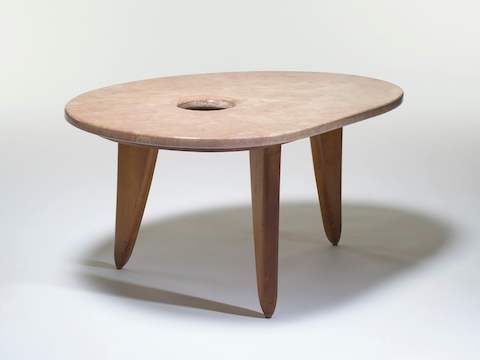
ISAMU NOGUCHI – IN-62
Produced in 1948, featuring sculptural birch legs and a marble top with an under-mounted metal bowl, Noguchi’s IN-62 table is one of the rarest of all Herman Miller designs. In 2005, one sold at Wright for an astounding $630,000.
This table is near and dear to my heart. I’ve actually handled three of these—two in my previous career, and one at Wright. One of them I actually owned. I bought it for $500, and tried to sell it for $20,000 but couldn’t. I kept it for a while, but then decided I needed the money, and it sold at auction for $9,000. Then in 2005 my best friend found another one at an estate sale. We put it up for auction expecting something between $70,000 and $90,000, but it brought in $630,000. At that point the guy I sold mine to for $9,000 called to thank me profusely! That was really a high point in my career, and I think really solidified what I had been doing up to that point. So I can’t really separate all that and just talk about the design—there will always be that backstory.
This table illustrates what I love about Herman Miller—their willingness to be experimental. In some respects the luxuriousness of this piece is not unlike the Nelson table we discussed earlier, but here its a bit more successful. Each of the three tables I’ve handled had different stone tops, but on each the quality of the finish and handcraft was superb. But then all this work is done on a very quirky three-legged table that absolutely straddles the line of sublime and ugly. When you take the marble top off, which is beautifully finished, the quality of the wood legs is not that great. Then there is this stainless steel bowl, some kind of a planter that you can float a flower in. For all the world it looks like a dog bowl that has had phalanges welded onto it. They literally adapted some sort of off-the-shelf bowl. On all three tables the construction detail is the same. Ultimately, for me, this is Herman Miller at its best.
